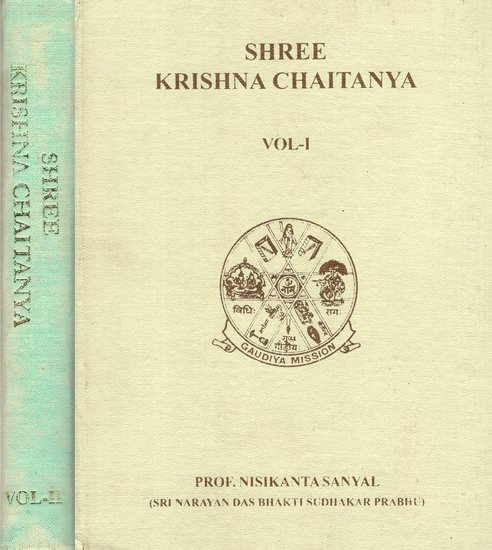Sri Krishna-Chaitanya
by Nisikanta Sanyal | 1933 | 274,022 words | ISBN-10: 818919500X
The present work is an attempt to offer a theistic account in the English language of the career and teachings of Sri Chaitanya (representing the Absolute Truth in His full manifestation). Sri Chaitanya came into this world to make all people understand that in reference to their eternal existence they should have nothing to do with non-Godhead. A...
Chapter 7 - Founder-Acharyas (a): Sri Vishnuswami
There are three different Vishnuswamis belonging to the same line. The first of them in order of time is known as Adi Vishnuswami and also as Sarbajna Muni. He was born in the Pandya country, the southernmost part of ancient Dravida in the third century B.C. His name, before he accepted sannyasa, was Devatanu. He was a tridandi sanyasin and re-established the old institution of tridanda sannyasa in the Iron Age. We find among his immediate followers no less than seven hundred tridanda sannyasins who were availed by him for preaching Vaishnavism against Buddhism. Vishnuswami is sometimes confounded with Sarbjnatma Muni who was an exclusive monist (kevaladvaitavadin). The system propounded by Adi Vishnuswami or Sarbajna Muni is known by the name of .suddhadvaita siddhanta., the pure monistic doctrine, as distinct from exclusive or pseudomonism.
According to Sri Vishnuswami the individual soul (jiva) is a constituent part of the Substantive Reality (vastu); the power of the vastu is maya; the activity of the vastu is the world; none of these being separate from the ‘Vast’.
The first point to be noticed in this connection is that Vishnuswami does not identify the individual soul (jiva) with the Brahman; neither does he conceive of the individual soul (jiva) as independent of the Brahman. His metaphor to bring out the relationship between the two, is that of the sparks of a great fire and the fire from which the sparks issue. Therefore, in the Scriptures the individual soul (jiva) has been sometimes called the Brahman, being qualitatively the same; and in other passages the individual soul (jiva) has been differentiated from the Brahman. In the next place the world being the activity of the Brahman, is also real and eternal. The origin and dissolution of the world as found in the Scriptures, mean its temporary disappearance but not substantive loss. The world is the unchanged transformation of the Brahman, just as the different ornaments made of gold are unchanged gold. Godhead, according to Vishnuswami, is the Embodiment of existence, self-consciousness and bliss in the embrace of the twin powers of ‘Hladini’ (that which delights and is delighted) and ‘Samvit’ (that which knows and makes known), as distinct from the bound soul who is, on the other hand, the source of all misery and enveloped in nescience. In his state of pure monistic consciousness the soul (jiva) is established in the relationship of servant to Godhead, which is the natural condition for the soul (jiva) who in the pure state is a fractional part of the whole, viz., Godhead. Godhead is the Lord of ‘maya’ the soul (jiva) is subduable by the deluding or limiting energy (maya). Godhead is self-manifest and transcendental bliss. The soul (jiva), although also self-manifest by reason of his being an integral part of the Whole, is located in the plane of misery, due to his attachment for a second entity besides Godhead. Godhead is ever free and never submits to any adjunctive modifications. He is possessed of transcendental qualities, is all-knowing, all-powerful, the Lord of all, the Regulator of all, the Object of worship of all, the Awarder of the fruit of all actions, the Abode of all beneficent qualities and substantive existence, consciousness and bliss.
Sri Vishnuswami following in the footsteps of Sri Rudra, was the worshipper of Sri Panchashya (Man-lion). He admits the Bodily Form of Godhead made of the principles of existence, consciousness and bliss, and the eternal coexistence of worship, worshipper and the worshipped. In his own words ‘the emancipated also, playfully assuming bodily forms, serve the Lord’. The main authorities recognized by the Vishnuswami community (sampradaya) are ‘Nrisimha tapani,’ ‘Srimad Bhagavatam’and ‘Sri Vishnupuranam’ Of the works of Vishnuswami himself the ‘sarbajna sukta’ alone is mentioned. The Vishnuswami school counts very few adherents at the present day. Sri Vallabhacharya, although he calls himself his follower, differs in certain respects from the views of Sri Vishnuswami.
